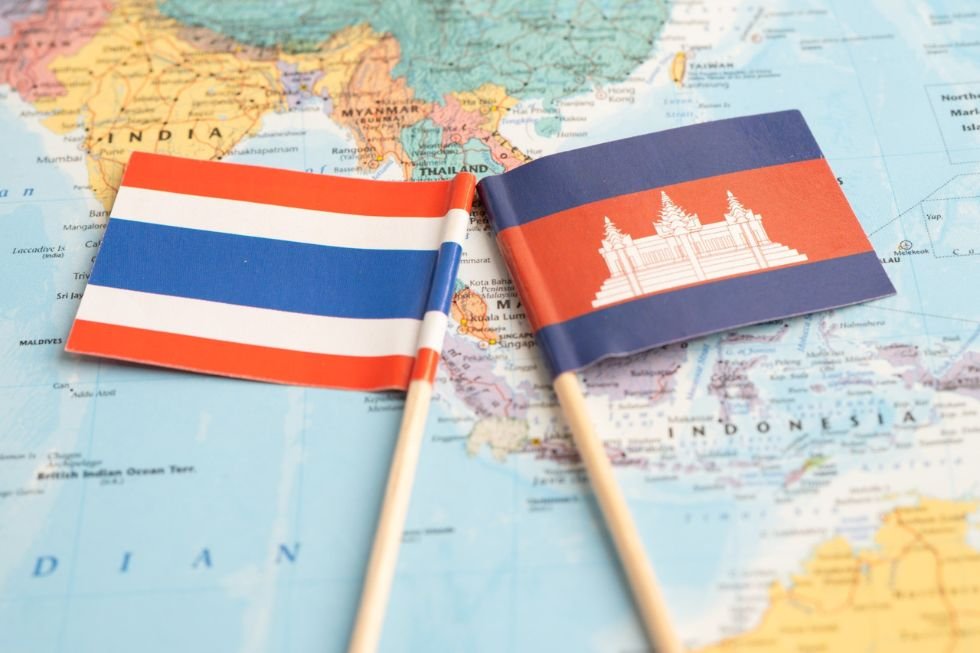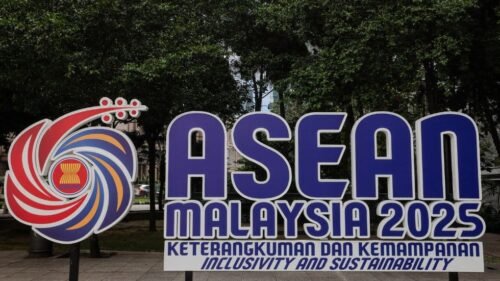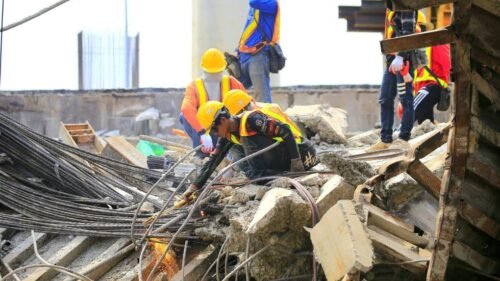The long-simmering border dispute between Thailand and Cambodia erupted into armed clashes in July, jolting the region and forcing thousands to flee their homes. Though both governments announced a ceasefire, the fragility of the agreement and the deep-rooted tensions fueling the conflict suggest this might be more of a pause than a true path to peace.
A conflict with colonial roots
This conflict is not the first time gunfire has echoed along the Thai-Cambodian border — and it likely won’t be the last. The origins of the dispute trace back over a century to the colonial cartography of French Indochina. When Cambodia gained independence from France in 1953, ambiguities in the 1907 Franco-Siamese border treaties left several stretches of the frontier undefined. Among the most contentious sites is the area surrounding the Preah Vihear temple complex, an ancient Angkorian site perched on a cliffside that both nations claim as their own.
Despite the International Court of Justice ruling in 1962 — and a reaffirmation in 2013 — that the temple and adjacent territory belong to Cambodia, Thailand has consistently resisted implementing the verdict in full. For both countries, the site is more than just land; it represents national pride, cultural heritage and sovereignty.
A political powder keg
The timing of this latest escalation on July 24 seems far from coincidental. Thailand, currently grappling with internal political instability, recently saw its fourth change in leadership since the 2023 elections. The acting Prime Minister, Phumtham Wechayachai, has been under intense pressure to assert control after a leaked conversation between former Prime Minister Paetongtarn Shinawatra and Cambodia’s de facto powerbroker, Hun Sen, painted Thai leadership in an unflattering light. For many observers, stoking nationalism through a border conflict appeared to be a calculated move to shift public focus away from domestic disarray.
Cambodia’s motivations, while similar, are anchored in internal consolidation. Prime Minister Hun Manet — the son of longtime leader Hun Sen — continues to establish his authority. A national rallying cause, such as a foreign threat, can serve as a unifying force, especially as Cambodia faces economic headwinds and widespread dissatisfaction.
The clashes began with a gunfight near the Ta Moan Thom temple complex, situated close to Thailand’s Surin province and Cambodia’s Oddar Meanchey. The situation quickly spiraled. Cambodia launched BM-21 Grad rocket systems, some targeting civilian infrastructure. Thailand retaliated with F-16 airstrikes. By the time a ceasefire was declared, at least 34 people — including civilians — had been killed, and over 270,000 displaced.
The Thai government closed all border crossings and began evacuating civilians within a 50-kilometer radius. Both sides deployed additional troops, and fears of a wider war mounted. Yet, neither country formally declared war — a telling sign that despite the fierce rhetoric and bloodshed, both governments are wary of crossing a line from which there would be no easy return.
On July 28, under the auspices of Malaysia, the two countries agreed to an “immediate and unconditional” ceasefire. Malaysian Prime Minister Anwar Ibrahim, acting as mediator and in his role as the Association of Southeast Asian Nations (ASEAN) chair, hailed the agreement as a “vital first step” towards restoring stability.
But hours after the ceasefire took effect, confusion set in. The Thai military accused Cambodia of violating the truce with fresh attacks. Cambodian officials, in turn, denied any new hostilities, stating that calm had returned to all fronts. Both sides cited contradictory timelines for follow-up military meetings, further reflecting the lack of mutual trust. While some displaced families have started returning home, uncertainty lingers. The ceasefire may be holding in spirit more than in practice.
Global reaction: Watchful, but distant
The international community has reacted in a measured way to the situation. The United States and China — both key players in Southeast Asia — welcomed the ceasefire and offered to monitor its implementation. However, neither appears willing to involve themselves deeply.
The US, under the current administration, is preoccupied with other global flashpoints. China, which has significant economic ties to both nations, prefers quiet diplomacy and has already proposed mediation, though with little visible urgency.
ASEAN, meanwhile, faces a credibility test. The organization lacks enforcement mechanisms or a peacekeeping arm, but Malaysia’s active diplomacy may signal a more proactive regional role. If Kuala Lumpur succeeds in facilitating sustained dialogue, it could elevate ASEAN’s standing as a regional conflict mediator.
Why a prolonged war is unlikely
Despite the recent violence, most analysts believe the conflict is unlikely to escalate into full-scale war. The reasons are primarily economic. Thailand depends heavily on Cambodian labor — estimates suggest between 500,000 and 1.5 million Cambodians work in Thailand’s agriculture, construction and services sectors. These workers send home roughly $2 billion annually, accounting for nearly 10% of Cambodia’s GDP.
Cambodia, on the other hand, relies on Thai imports and uses Thailand as a key transit hub for goods and tourism. Over 40% of international tourists to Cambodia arrive via Thailand, and tourism represents a fifth of the Cambodian economy.
Both countries, in other words, have too much to lose. A prolonged conflict would devastate trade, cause labor shortages, inflate prices and severely damage their tourism sectors.
What comes next?
The path forward hinges on rebuilding trust — a tall order given the nationalistic posturing on both sides. Border demarcation, which would provide a long-term solution, remains politically toxic for leaders fearful of appearing weak.
The current scenario suggests a likely return to the status quo: a “cold peace” marked by occasional flare-ups, symbolic military actions, and rhetorical sparring. The border dispute will continue to serve as a tool for domestic distraction, not a problem to be solved.
Still, the hope remains that diplomacy — perhaps facilitated by ASEAN or neutral countries like Malaysia — can create the conditions for dialogue. Confidence-building measures, joint economic projects in border areas, and people-to-people exchanges might offer a roadmap for easing tensions.
But unless both Phnom Penh and Bangkok find the political courage to compromise and confront their respective national narratives, the ghosts of colonial borders will keep haunting Southeast Asia. For now, the ceasefire may have paused the gunfire — but the conflict itself is far from over.
[Kaitlyn Diana edited this piece.]
The views expressed in this article are the author’s own and do not necessarily reflect Fair Observer’s editorial policy.
Support Fair Observer
We rely on your support for our independence, diversity and quality.
For more than 10 years, Fair Observer has been free, fair and independent. No billionaire owns us, no advertisers control us. We are a reader-supported nonprofit. Unlike many other publications, we keep our content free for readers regardless of where they live or whether they can afford to pay. We have no paywalls and no ads.
In the post-truth era of fake news, echo chambers and filter bubbles, we publish a plurality of perspectives from around the world. Anyone can publish with us, but everyone goes through a rigorous editorial process. So, you get fact-checked, well-reasoned content instead of noise.
We publish 3,000+ voices from 90+ countries. We also conduct education and training programs
on subjects ranging from digital media and journalism to writing and critical thinking. This
doesn’t come cheap. Servers, editors, trainers and web developers cost
money.
Please consider supporting us on a regular basis as a recurring donor or a
sustaining member.
Will you support FO’s journalism?
We rely on your support for our independence, diversity and quality.








Comment